Even back in the days before E! and TMZ, Americans loved ogling celebrities in what appeared to be candid moments. To see your favorite movie stars out of character, seemingly unaware of the camera, just hanging out--that was a thrill, a vicarious sensation that they are just people, and I'm just a person, and so maybe we could meet and be friends. Of course, all the better if the celebrities' candid moments could somehow also be glamorous and exciting...
Which brings us to the MGM short subject Sunday Night at the Trocadero (1937). There is an ostensible plot to this two-reeler--something to do with some talent scouts at a hot LA nightclub on the same night that movie star Reginald Denny gets a camera and uses it to snap photos of his fellow stars as they enjoy the night's entertainment. Nobody sat through this film waiting for the narrative resolution to any of this threadbare storytelling, but the premise was sufficient justification to provide a parade of cameos by mostly low-wattage celebrities and some alternately goofy or just poor impersonations of better known stars (including a cringe-inducing blackface riff on Al Jolson).
The Trocadero was a fashionable Hollywood nightclub on the Sunset Strip owned by businessman William Wilkerson. Another of Wilkerson's ventures was The Hollywood Reporter, and his habit of printing stories about the stars who frequented his club helped induce those stars, in turn, to frequent the club. The Trocadero had opened just a few years before this short was filmed, and had already garnered a reputation as the place where celebrities went to be seen.
Despite this, for today's audiences, the promised "galaxy of stars" rings hollow. The names Dick Foran, John Howard, Margot Grahame, Sally Blane, June Collyer are not likely to even be remembered by most viewers today. The biggest names and most recognizable faces on display belong to the likes of Chester Morris, Robert Benchley, Frank Morgan, and most notably Groucho Marx--out of makeup and looking genuinely candid.
Producer Louis Lewyn specialized in short subjects that indulged the audience's fascination with Hollywood actors and actresses--Screen Snapshots, The Voice of Hollywood, and Hollywood on Parade were his bread and butter for years. Director George Sidney was a young man then at the early end of his career, whose later works would include Anchors Aweigh (1945), Viva Las Vegas (1964), and Bye Bye Birdie (1963).
By David Kalat
Sunday Night at the Trocadero
Brief Synopsis
In this short film, Reginald Denny introduces various singing and dancing acts.
Cast & Crew
Read More
George Sidney
Director
Norman Foster
Himself
Gaylord Carter
Connee Boswell
Ruth Johnson
Herself
John Howard
Himself
Film Details
Genre
Short
Comedy
Music
Musical
Release Date
1937
Production Company
International Models; Louis & Celeste; Louis Lewyn Productions; Medina & Mimosa; Metro-Goldwyn-Mayer Studios Inc.; The Three Brian Sisters
Distribution Company
Metro-Goldwyn-Mayer Studios Inc.
Technical Specs
Duration
20m
Synopsis
In this short film, Reginald Denny introduces various singing and dancing acts.
Director
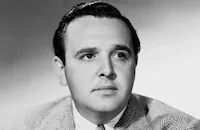
George Sidney
Director
Cast

Norman Foster
Himself
Gaylord Carter
Connee Boswell
Ruth Johnson
Herself
John Howard
Himself
Margaret Vale
Herself

June Collyer
Herself
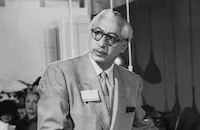
Benny Rubin
Himself
Lester Dorr
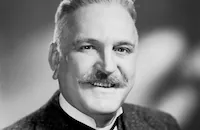
Frank Morgan
Himself

Toby Wing
Himself

Marge Champion
Cynthia Lindsay
Arthur Lake
Himself
Sally Blane
Herself

Glenda Farrell
Herself

Dick Foran
Himself

Robert Benchley
Himself

Margot Grahame
Herself

Eric Blore
Himself
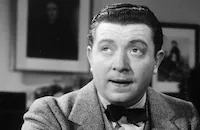
Frank Mchugh
Himself

George Hamilton
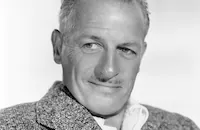
Reginald Denny

Chester Morris
Himself

Peter Lind Hayes

Groucho Marx

Stuart Erwin
Himself

Bert Wheeler
Himself
Russell Gleason
Himself
Film Details
Genre
Short
Comedy
Music
Musical
Release Date
1937
Production Company
International Models; Louis & Celeste; Louis Lewyn Productions; Medina & Mimosa; Metro-Goldwyn-Mayer Studios Inc.; The Three Brian Sisters
Distribution Company
Metro-Goldwyn-Mayer Studios Inc.
Technical Specs
Duration
20m
Articles
Sunday Night at the Trocadero

Sunday Night at the Trocadero
Even back in the days before E! and TMZ, Americans loved ogling celebrities in what appeared to be candid moments. To see your favorite movie stars out of character, seemingly unaware of the camera, just hanging out--that was a thrill, a vicarious sensation that they are just people, and I'm just a person, and so maybe we could meet and be friends. Of course, all the better if the celebrities' candid moments could somehow also be glamorous and exciting...
Which brings us to the MGM short subject Sunday Night at the Trocadero (1937). There is an ostensible plot to this two-reeler--something to do with some talent scouts at a hot LA nightclub on the same night that movie star Reginald Denny gets a camera and uses it to snap photos of his fellow stars as they enjoy the night's entertainment. Nobody sat through this film waiting for the narrative resolution to any of this threadbare storytelling, but the premise was sufficient justification to provide a parade of cameos by mostly low-wattage celebrities and some alternately goofy or just poor impersonations of better known stars (including a cringe-inducing blackface riff on Al Jolson).
The Trocadero was a fashionable Hollywood nightclub on the Sunset Strip owned by businessman William Wilkerson. Another of Wilkerson's ventures was The Hollywood Reporter, and his habit of printing stories about the stars who frequented his club helped induce those stars, in turn, to frequent the club. The Trocadero had opened just a few years before this short was filmed, and had already garnered a reputation as the place where celebrities went to be seen.
Despite this, for today's audiences, the promised "galaxy of stars" rings hollow. The names Dick Foran, John Howard, Margot Grahame, Sally Blane, June Collyer are not likely to even be remembered by most viewers today. The biggest names and most recognizable faces on display belong to the likes of Chester Morris, Robert Benchley, Frank Morgan, and most notably Groucho Marx--out of makeup and looking genuinely candid.
Producer Louis Lewyn specialized in short subjects that indulged the audience's fascination with Hollywood actors and actresses--Screen Snapshots, The Voice of Hollywood, and Hollywood on Parade were his bread and butter for years. Director George Sidney was a young man then at the early end of his career, whose later works would include Anchors Aweigh (1945), Viva Las Vegas (1964), and Bye Bye Birdie (1963).
By David Kalat













